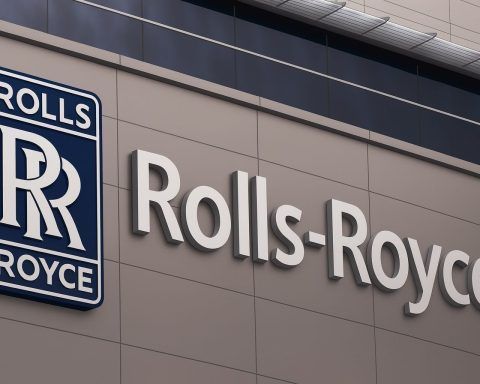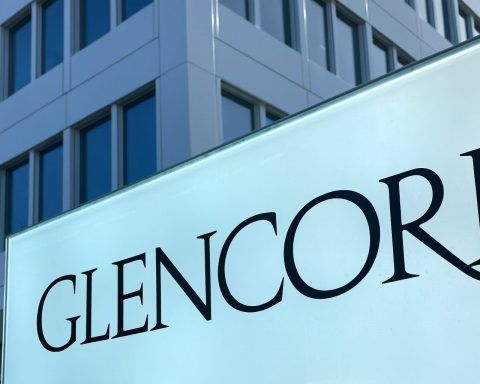London’s FTSE 100 fell again on Tuesday 18 November 2025, as a global “risk‑off” wave driven by tech valuation worries, fading hopes of a near‑term US rate cut and a sharp drop in Bitcoin spilled into the UK stock market. The blue‑chip index traded around 9,580–9,600, down just under 1% from Monday’s close of 9,675.43, while the FTSE 250 mid‑cap benchmark slid about 1.1% to roughly 21,450. [1]
Just days after hitting an all‑time high near 9,930, the FTSE 100 is now more than 3% below that peak, underlining how quickly sentiment has flipped from euphoria to caution. [2]
FTSE 100 and UK indices: where the market stands today
As of Tuesday’s session in London:
- FTSE 100: around 9,590, down about 0.85–1.0% on the day, after Monday’s 0.24% decline to 9,675.43. [3]
- FTSE 250: down 238 points (‑1.1%) at 21,449.61. [4]
- AIM All‑Share: off roughly 1% around 736.7. [5]
- Cboe UK 100 and Cboe UK 250 indices were each down about 1.1%, mirroring the weakness in their FTSE counterparts. [6]
Across Europe, the STOXX 600 fell around 1.1% to a one‑week low, with Germany’s DAX and France’s CAC 40 each down more than 1.2%, underscoring that this is a region‑wide sell‑off, not a UK‑specific wobble. [7]
Global tech jitters and Fed uncertainty hit the UK stock market
The pressure on the FTSE 100 today is part of a broader global shake‑out:
- On Monday, Wall Street slid again, with the S&P 500 losing around 0.9% and the Dow Jones dropping about 1.2%, as the US benchmark closed below its 50‑day moving average for the first time since April — a technical red flag for many traders. [8]
- Investors are bracing for Nvidia’s earnings on Wednesday and a long‑delayed US jobs report on Thursday, both seen as potential catalysts for either a rebound or a deeper correction in risk assets. [9]
In Europe, Reuters reports that worries over overvalued tech stocks and diminishing expectations of a December Federal Reserve rate cut are driving a broad risk‑off mood. Financials are under particular pressure, with European banking indices down more than 2% on the day. [10]
The risk shunning is visible well beyond equities:
- Bitcoin briefly fell below $90,000 for the first time in seven months and is now down about 28–29% from its early‑October all‑time high above $126,000, according to both Bloomberg/Business Times and UK market commentary. [11]
- Bond markets are seeing a bid for safety, with the US 10‑year Treasury yield edging down towards 4.11%. [12]
Put simply: money is being pulled out of the raciest corners of the market (AI‑linked tech, crypto, high‑beta equities) and parked in safer assets. London, with its heavy weighting in financials, miners and global cyclicals, is getting caught in that downdraft.
Sector snapshot: miners, banks down; defensives and tobacco offer support
Miners and cyclicals lead the fall
Mining and other cyclical stocks are once again on the wrong side of today’s trade:
- Gold miners such as Fresnillo were among the worst FTSE 100 performers, slumping around 5–6% as the gold price eased from recent highs. [13]
- Broader risk‑sensitive names — including housebuilders and economically exposed industrials — also came under pressure, reflecting worries over global growth and tighter financial conditions. [14]
Banks face mixed signals
UK banks are being buffeted by conflicting forces:
- On the negative side, weaker equity sentiment and concerns about the economic backdrop are dragging on share prices. London’s big lenders have been volatile in recent sessions as markets toggle between optimism on rate cuts (which can squeeze margins) and fear of slower growth and rising credit risk. [15]
- At the same time, the Bank of England’s decision to boost deposit insurance — increasing the Financial Services Compensation Scheme (FSCS) cap from £85,000 to £120,000 per saver — underscores ongoing regulatory caution around financial stability. [16]
The larger protection limit is supportive for depositor confidence but could incrementally increase compliance and funding costs for banks, especially smaller institutions.
Defensives and tobacco buck the trend
In contrast, classic “defensive” names are showing relative strength:
- AstraZeneca and Unilever both traded higher, as investors rotated into businesses with steadier earnings profiles. [17]
- Imperial Brands was another notable gainer. The tobacco group reported a 3.3% rise in pre‑tax profit to £3.13 billion for the year to 30 September, even as reported revenue dipped 0.7% to £32.17 billion. The company hiked its total dividend by 4.5% to 160.32p per share and highlighted strong growth in “next generation” products such as vapes and oral nicotine pouches. [18]
Imperial’s shares were up roughly 3% in morning trade, helping to cushion the broader FTSE 100. [19]
Big movers: ICG surges, Crest Nicholson slumps
ICG shines on profit jump and Amundi deal
One of the few bright spots in today’s UK stock market is Intermediate Capital Group (ICG):
- The FTSE 100 alternative asset manager’s stock jumped around 7–9% after it reported a 77% surge in first‑half pre‑tax profit to £352m, with assets under management rising to about $124bn. [20]
- ICG also raised its dividend and upgraded medium‑term guidance for the share of performance fees in total fee income. [21]
- Adding further momentum, Amundi, Europe’s largest asset manager, unveiled plans to buy a 9.9% stake in ICGin a deal worth roughly £550m based on Monday’s market value. Under a 10‑year global partnership, Amundi will become ICG’s exclusive distributor in the wealth channel for selected private‑market products. [22]
For a market worried about tech‑heavy froth, the combination of strong, fee‑rich earnings and a strategic tie‑up in private assets has made ICG a rare winner on an otherwise red‑tinted FTSE 100 board.
Crest Nicholson hit by housing-market and Budget nerves
Housebuilder Crest Nicholson is on the other side of the ledger:
- The FTSE 250 firm warned that adjusted pre‑tax profit for the year to 31 October will be at the low end, or marginally below, its prior guidance range of £28–38m. [23]
- Management pointed to a housing market that “remained subdued through the summer” and “continued uncertainty” around UK tax policy ahead of the Autumn Budget, due next week. [24]
Shares slumped by double digits, making Crest Nicholson one of the day’s biggest fallers and underlining how sensitive UK domestic plays remain to both economic data and fiscal policy speculation. [25]
Policy and regulation: BoE deposit guarantee and CMA crackdown
Two major UK policy stories are also shaping the backdrop for UK equities today.
BoE raises deposit protection to £120,000
The Bank of England’s Prudential Regulation Authority (PRA) confirmed that the FSCS deposit guarantee is being increased by 40%, from £85,000 to £120,000 per eligible depositor, with a higher temporary cap of £1.4m for certain large balances (such as home‑sale proceeds). [26]
The PRA said the new limit reflects “persistently high inflation” and aims to maintain public confidence in the banking system. The UK’s protection will now exceed the EU’s harmonised €100,000 level but remain below the $250,000 US FDIC cap. [27]
For bank stocks, the move is a reminder that the post‑crisis regulatory framework remains robust — reassuring for depositors, but another reason investors treat the sector as heavily regulated and structurally constrained.
CMA targets ‘drip pricing’ and online sales tactics
Separately, the Competition and Markets Authority (CMA) has launched its first investigations under new consumer‑protection powers granted by the Digital Markets, Competition and Consumers Act 2024. [28]
Key details:
- The CMA is probing eight companies, including ticketing platforms StubHub and Viagogo, fitness chain Gold’s Gym and homeware retailer Wayfair, over practices such as “drip pricing” (where unavoidable fees appear only at checkout) and potentially misleading countdown timers on discounts. [29]
- Under the new regime, the watchdog can impose fines of up to 10% of global turnover and order firms to compensate customers without going through the courts. [30]
While many of the firms initially named are not FTSE 100 constituents, the crackdown has implications for all UK‑listed consumer and online businesses, raising compliance costs and reputational risks for companies that lean heavily on aggressive digital sales tactics.
Cyber risk in focus: 460,000 stolen FTSE 100 credentials
If investors needed another reminder that risk is not just about interest rates and valuations, a new cyber‑security report provided it this morning.
UK cyber‑security firm Socura, in partnership with threat‑exposure specialist Flare, published a study titled “FTSE 100 for sale”, analysing dark‑web data linked to Britain’s largest listed companies. The findings are stark: [31]
- Researchers identified more than 460,000 instances of stolen employee credentials connected to FTSE 100 companies.
- 15 firms each had over 10,000 such credential instances exposed online; one company had more than 45,000.
- At 59% of FTSE 100 companies, at least one employee was found using “password” as their password.
- Over 28,000 corporate credentials were leaked via infostealer malware logs.
Socura warns that these stolen credentials are often sold on dark‑web forums to more sophisticated criminals who then use them to infiltrate systems, deploy ransomware or exfiltrate sensitive data. For investors, the report is another data point showing that cyber risk is now a core operational and reputational risk for blue‑chip UK stocks — one that can surface abruptly and impact valuations. [32]
What it means for the UK stock market today
Today’s move lower in the FTSE 100 and FTSE 250 is less about any single UK‑specific shock and more about global positioning and sentiment:
- After a powerful rally that pushed the FTSE 100 to record highs above 9,930, valuations had become more vulnerable to a pullback — especially with AI‑linked tech driving a big chunk of global gains. [33]
- The combination of US tech wobbling, Bitcoin reversing sharply, higher‑for‑longer rate fears, UK Budget uncertainty and fresh regulatory headlines (BoE, CMA, cyber) has given traders multiple reasons to hit the sell button and de‑risk. [34]
For medium‑ to long‑term investors, episodes like today’s drawdown are often viewed through three lenses (this is notfinancial advice, just framing):
- Valuations and earnings
- Many FTSE 100 names — particularly in energy, banks and traditional value sectors — still trade on lower multiples than their US counterparts, but earnings are closely tied to global growth and commodity cycles. [35]
- Sector mix and defensiveness
- The index’s tilt towards defensives (healthcare, consumer staples, tobacco) has provided some ballast today, as seen with AstraZeneca, Unilever and Imperial Brands. At the same time, its exposure to mining and financials makes it sensitive to macro and policy shocks. [36]
- Upcoming catalysts
- Near‑term, markets will be watching Nvidia’s earnings, the delayed US jobs report, and the UK’s Autumn Budget on 26 November for clues on the path of rates, fiscal policy and risk appetite into year‑end. [37]
Volatility is likely to remain elevated around these events. For now, the story of 18 November 2025 is straightforward: risk is being taken off the table, and London’s blue‑chips are feeling the chill alongside the rest of the world.
References
1. www.investing.com, 2. www.investing.com, 3. www.investing.com, 4. www.lse.co.uk, 5. www.lse.co.uk, 6. www.lse.co.uk, 7. www.reuters.com, 8. www.reuters.com, 9. www.reuters.com, 10. www.reuters.com, 11. www.businesstimes.com.sg, 12. www.businesstimes.com.sg, 13. www.lse.co.uk, 14. www.lse.co.uk, 15. www.lse.co.uk, 16. www.reuters.com, 17. www.lse.co.uk, 18. www.lse.co.uk, 19. www.lse.co.uk, 20. www.cityam.com, 21. www.cityam.com, 22. www.reuters.com, 23. www.standard.co.uk, 24. www.standard.co.uk, 25. www.standard.co.uk, 26. www.reuters.com, 27. www.reuters.com, 28. www.reuters.com, 29. www.reuters.com, 30. www.reuters.com, 31. www.prnewswire.com, 32. www.prnewswire.com, 33. www.investing.com, 34. www.reuters.com, 35. www.fidelity.co.uk, 36. www.lse.co.uk, 37. www.reuters.com







